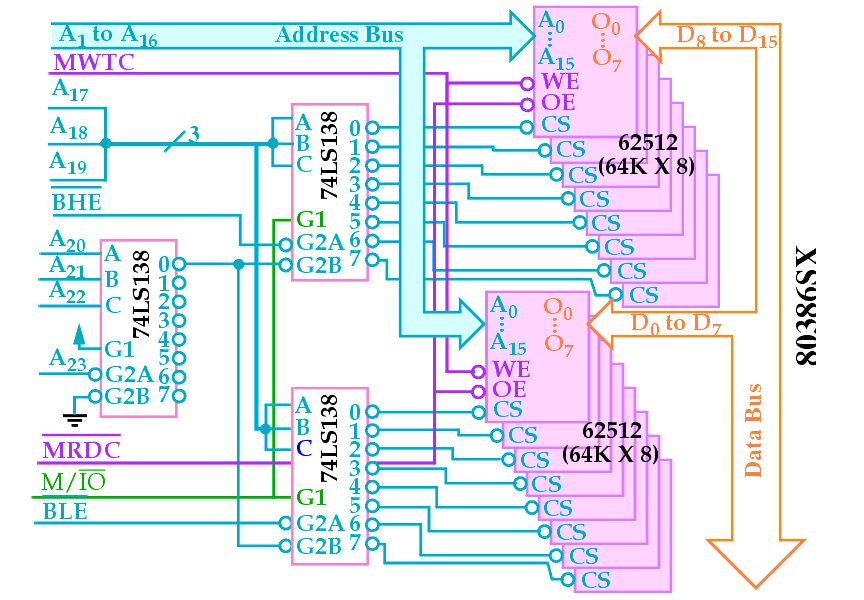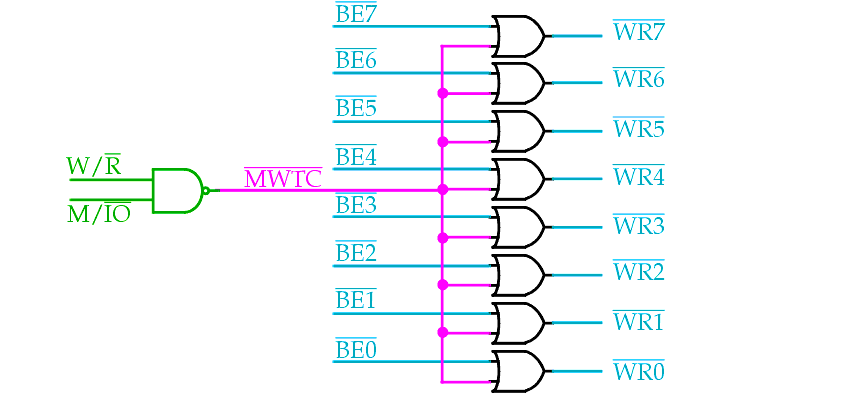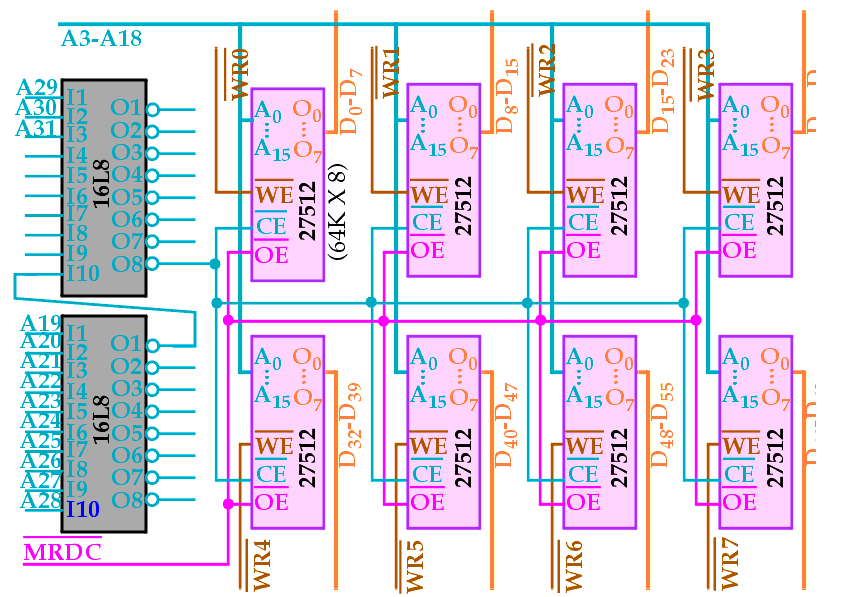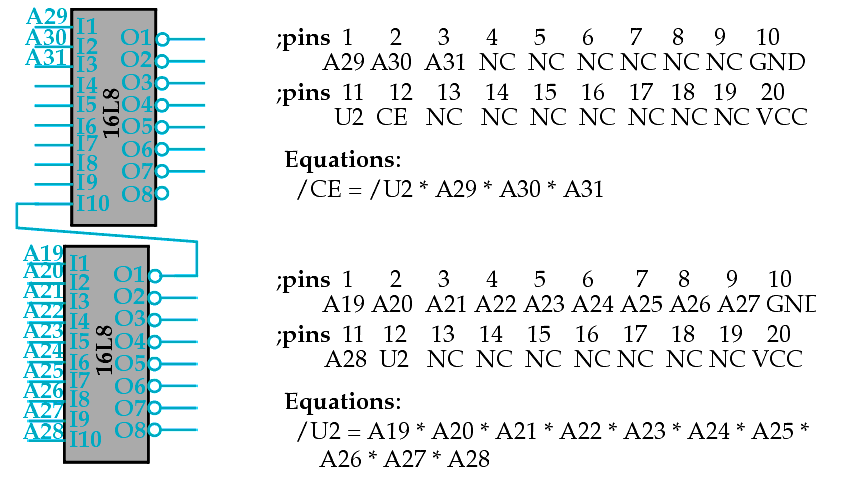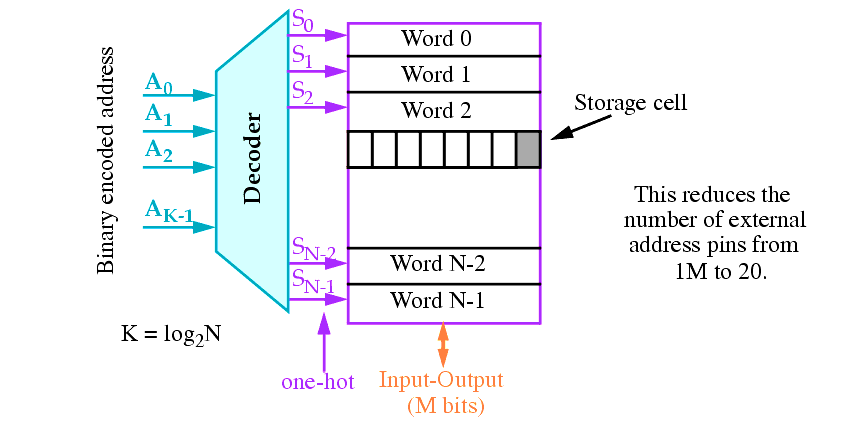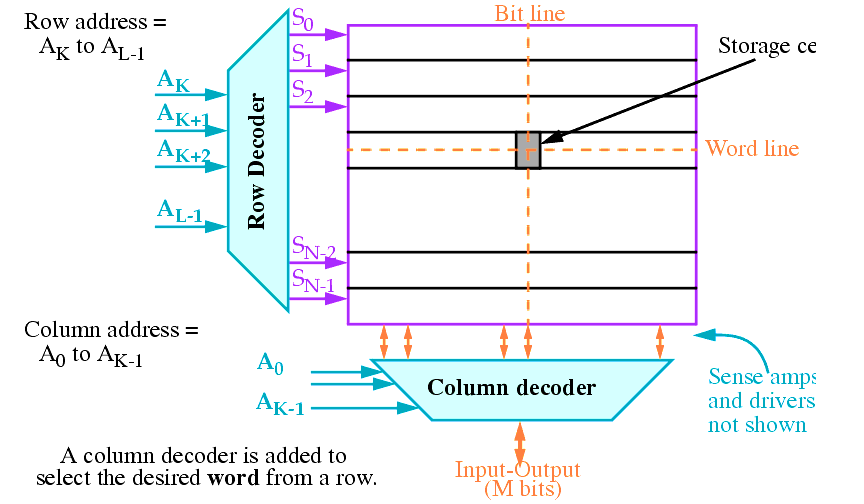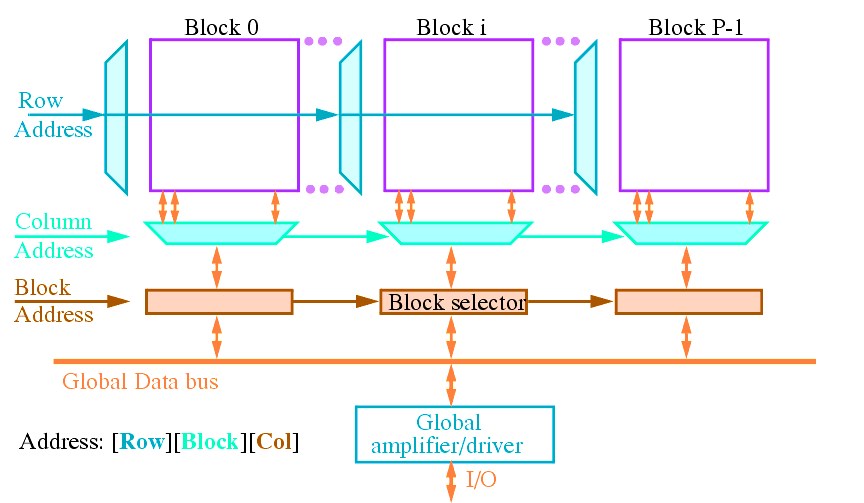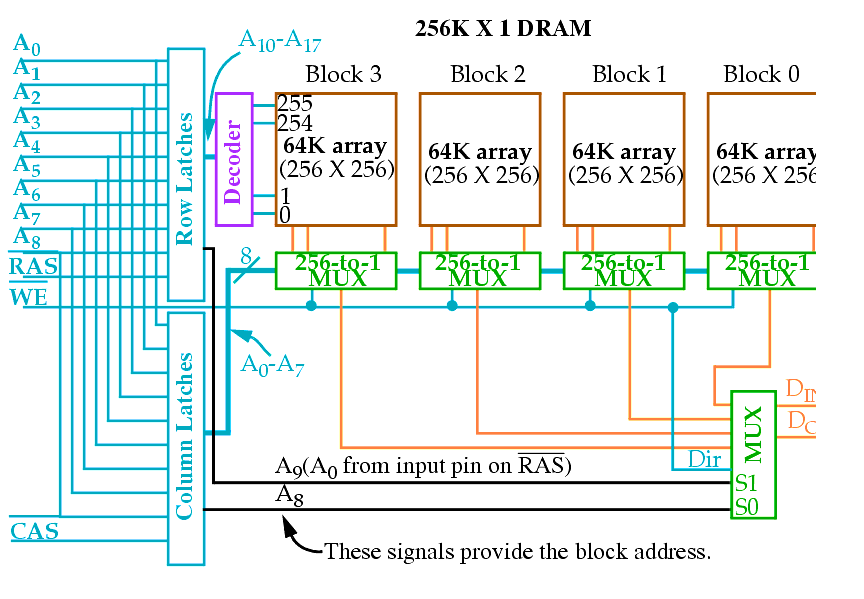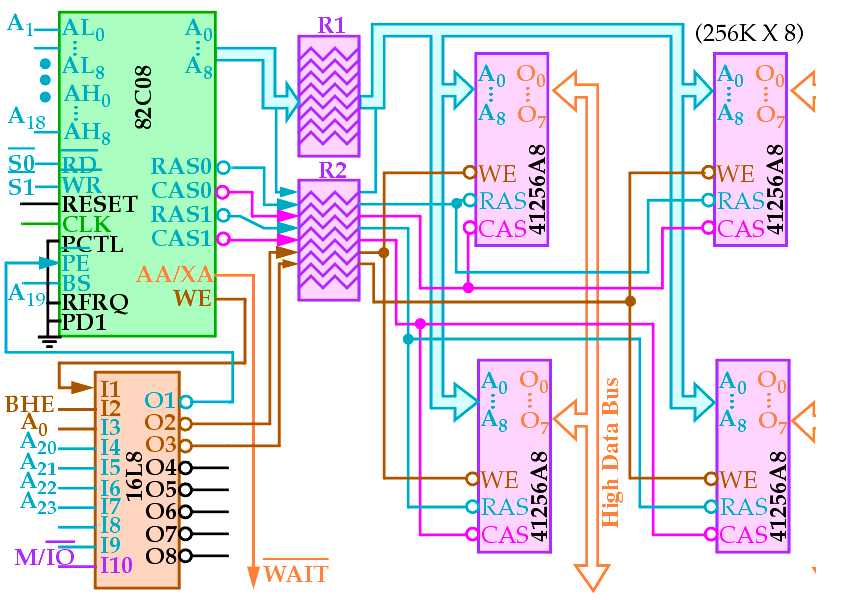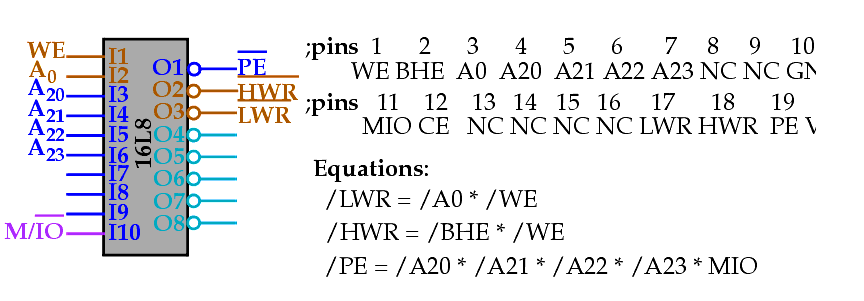The microprocessor must be able to read and write data to any 16-bit location in addition to any 8-bit location.
BHE and BLE are used to select one or both:
| BHE |
BLE |
Function |
|---|---|---|
| 0 |
0 |
Both banks enabled for 16-bit transfer |
| 0 |
1 |
High bank enabled for an 8-bit transfer |
| 1 |
0 |
Low bank enabled for an 8-bit transfer |
| 1 |
1 |
No banks selected |
Note that 8-bit read requests in this scheme are handled by the microprocessor (it selects the bits it wants to read from the 16-bits on the bus).
There does not seem to be a big difference between these methods although the book claims that there is.
Note in either method that A0 does not connect to memory and bus wire A1 connects to memory pin A0, A2 to A1, etc.
See text for Separate Write Strobe scheme plus some examples of the integration of EPROM and SRAM in a complete system.
32-bit, 16-bit and 8-bit transfers are accomplished by different combinations of the bank selection signals BE3, BE2, BE1, BE0.
They are don't cares in the decoding of the 32-bit address outside the chip (using a PLD such as the PAL 16L8).
In order to build an N-word memory where each word is M bits wide (typically 1, 4 or 8 bits), a straightforward approach is to stack memory:
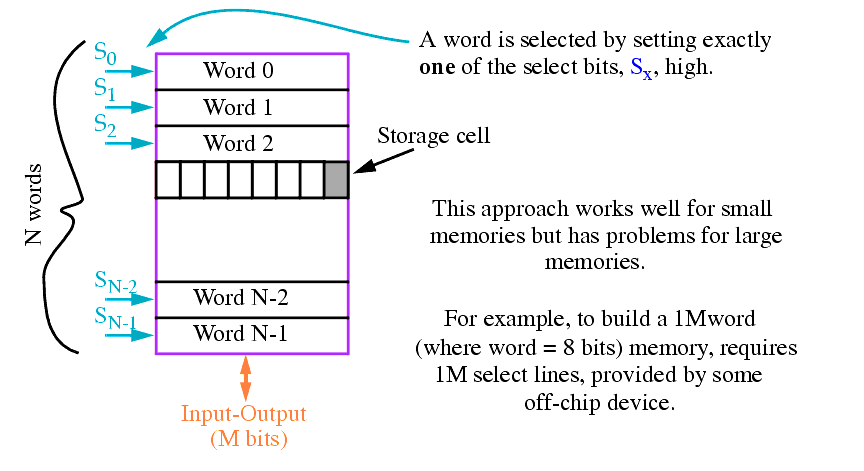
|
Besides the bizarre shape factor, the design is extremely slow since the vertical wires are VERY long (delay is at least linear to length).
This capacitor is not perfect, i.e., it discharges over the course of time via the access transistor.
DRAM internally reads one row and amplifies the read data. Not transferred to the output pins as CAS is disabled.
The main disadvantage of this refresh method is that an external logic device, or some program, is required to generate the DRAM row addresses in succession.
Most modern DRAM chips have one or more internal refresh mode, the most important is the CAS-before-RAS refresh
When the above sequence is applied on CAS and RAS the internal refresh logic generates an address and refreshes the associated cells
During a hidden refresh the CAS signal is further held on a low level, and only the RAS signal is switched
The address counter for refresh cycle is in the DRAM, the row and column addresses shown in the timing diagram are only for the read cycle
If the CAS signal stays low for a sufficiently long time, several refresh cycles can be carried out in succession by switching the RAS signal frequently between 0 and 1
Most new motherboards implement the option of refreshing the DRAM memory with the CAS-before-RAS or hidden refresh instead of using the DMA chip and the timer chip (as done for older 8086 systems)
A DRAM controller is usually responsible for address multiplexing and generation of the DRAM control signals.
These devices tend to get very complex. We will focus on a simpler device, the Intel 82C08, which can control two banks of 256K X 16 DRAM memories for a total of 1 MB.
Microprocessor bits A1 through A18 (18 bits) drive the 9 Address Low (AL) and 9 Address High (AH) bits of the 82C08. 9 of each of these are strobed onto the address wires A0 through A8 to the memories.
This drives a 16-bit word onto the High and Low data buses (if WE is low) or writes an 8 or 16 bit word into the memory otherwise.
WE (from the 82C08), BHE and A0 are used to determine if a write is to be performed and which byte(s) (low or high or both) is to be written.

